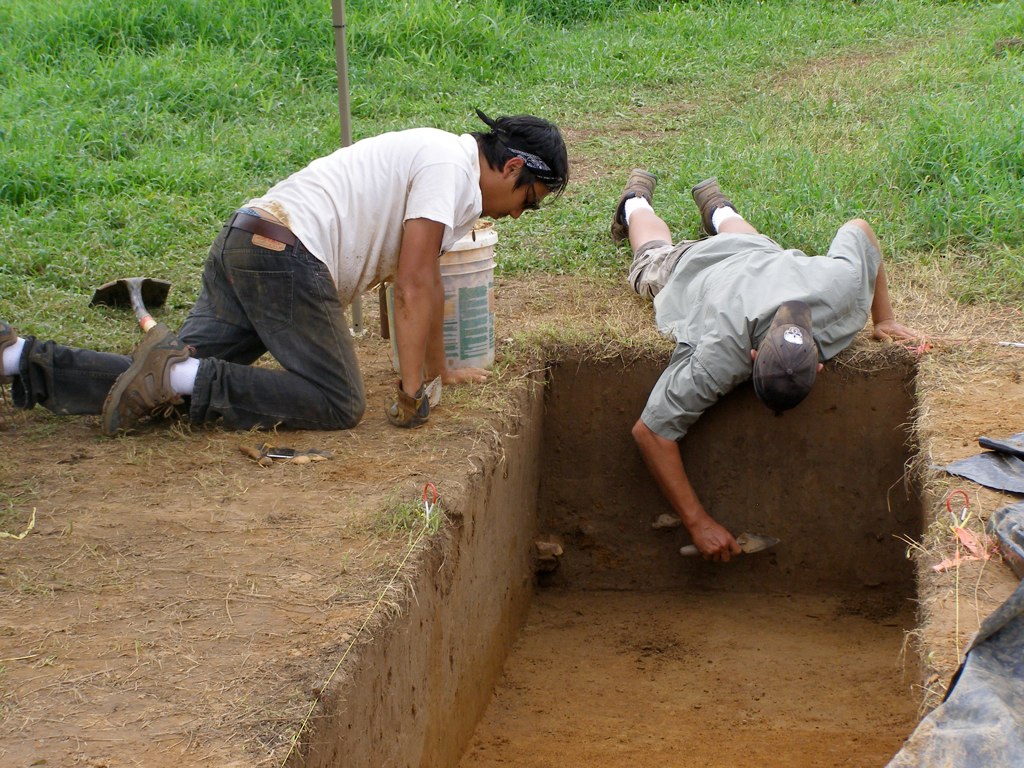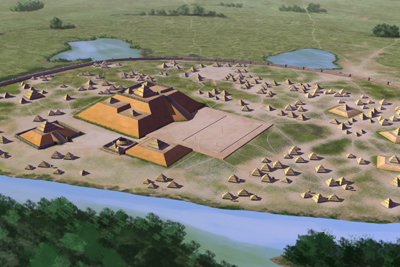
Located along the Etowah River, three large mounds and at least six smaller mounds, known as the Etowah Mounds, are remnants of a Native American settlement, dating all the way back to approximately 1000 CE. As only a small portion of the mounds have been excavated, little is known about the original inhabitants and builders of the settlement, though they are believed to be ancestors of the Muscogee-Creek and Cherokee Native Americans, who later settled into the land until forcibly removed by President Andrew Jackson in the 1830s. Based on the small excavation done, it is believed that Mound A was where the chief lived, Mound B was for religious ceremonies, and Mound C was the nobility burial site. In addition to the mounds, a moat was built on three sides of the settlement, with the Etowah River functioning as the 4th boundary. While other mounds in the area have been destroyed due to farming and road construction or are not as prominent as they once were due to erosion and flooding, the Etowah Indian Mounds are some of the most intact mounds in the southeast of the Mississippian culture and are considered a National Historic Landmark.

Due to its proximity to the Etowah River, this location was likely chosen for ease of access to water. However, this likely had the consequence of the settlement being flooded both seasonally and during times of heavy rain. To prevent some of their settlement structures from being flooded, while still having easy access to water and the fertile soil around the river for farming, the mounds were likely built as platforms for some of the settlement. To build the mounds, the Native Americans used soil from the boundary of the settlement, which resulted in a moat around the settlement when it flooded, which functioned as a hinderance to enemies. The mounds were also a tactical benefit, as it allowed for the Native Americans to have a greater view of the area.

Sources:
Etowah Valley Historical Society. (n.d.) Native American. https://evhsonline.org/native-american
Larson, L. (2002). Etowah Mounds. In New Georgia Encyclopedia. https://www.georgiaencyclopedia.org/articles/history-archaeology/etowah-mounds/
Mark, J. J. (2021). Etowah Mounds. In World History Encyclopedia. https://www.worldhistory.org/Etowah_Mounds/